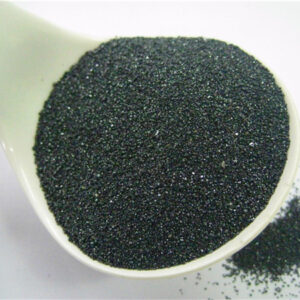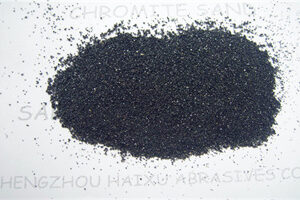Main properties and applications of chromite sand
Chromite sand, also known as iron chromite sand, belongs to the chromium spinel category. The main mineral composition is CR203. The actual mineral is a mixture of various spinels.
The density of chromite sand is 4 4.8g/cm3, the Mohs hardness is 5.5-6, and the refractoriness >1800℃.
Main properties of chromite sand
1) Chromite sand has good resistance to alkaline slag and does not react with iron oxide, etc.; therefore, in practical applications, chromite sand can avoid thermochemical sand sticking;
2) During the casting process of molten metal, chromite sand itself undergoes solid phase sintering, preventing the penetration of molten metal, thereby preventing mechanical sand sticking;
3) The thermal conductivity of chromite sand is several times greater than that of silica sand, which can increase the cooling rate of castings. Therefore, chromite sand can play the role of external cold iron in practical applications;
4) The most harmful impurity in chromite sand is carbonate (CaCO3·MgCO3), which decomposes into CO2 when it comes into contact with high-temperature metal, which can easily cause pores in castings; usually, chromite sand containing carbonate is roasted at 900°C-950°C to decompose the carbonate in it.
5) The effect of the particle size of chromite sand on its refractoriness
The particle size of chromite sand can significantly affect its refractoriness. In the past, it was believed that too coarse particles would reduce the surface finish of the casting, but on the surface of the sand mold and sand core made of chromite sand, a certain thickness of coating is usually sprayed, so that the surface finish of the casting is almost unaffected.
Generally, the size of the sand mold used for large steel castings is AFS40-45 and for medium and small parts is AFS45-55 or AFS40-50. There are also some special cases, such as: some small water pump industries, considering economic factors, use chromite sand instead of zircon sand. The chromite sand purchased by these factories requires very fine, requiring AFS50-60 AFS60-70, or even AFS70-80, etc.
Applications of chromite sand
The applications of chromite sand are mainly large low-carbon steel castings which are more than tens of tons. Such large steel castings are most suitable for using chromite sand as a molding material. Generally, the size of chromite sand is required to be AFS40-45, or even coarser AFS35-40. However, in the past decade, chromite sand has also been widely used in small castings in the automobile engine industry. This is mainly because chromite sand has high refractoriness and can produce smooth and high-quality castings.




















